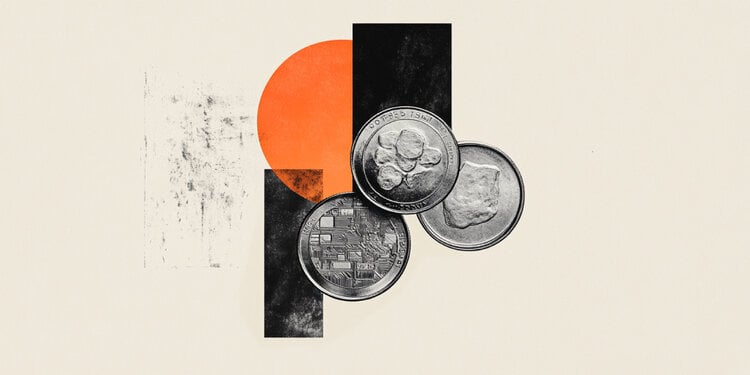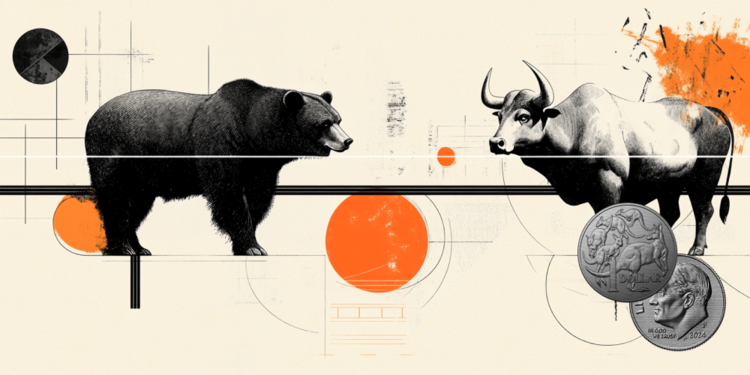- The USD/CAD is strengthened around 1,3695 in the first Asian session on Thursday.
- Fed officials voted to maintain the reference federal funds rate without changes in their June meeting on Wednesday.
- Trump will argue with his advisors about the Israel-Iran conflict, but has not decided on an US attack.
The USD/CAD pair quotes in positive territory for the third consecutive day about 1,3695 during the first Asian session on Thursday. The US dollar (USD) advances against the Canadian dollar (CAD) after the Federal Reserve (FED) maintained interest rates without changes in the June policy meeting. Investors will be attentive to the conflict in the Middle East as tensions continue.
The Federal Open Market Committee (FOMC) voted unanimously on Wednesday to leave the interest rate without changes in a range of 4.25%-4.50%. Fed officials continued to project two reductions in interest rates in 2025, although new projections showed a growing division among policy managers.
Fed officials expect the tariff policies of US President Donald Trump to affect economic activity and exert upward pressure on prices. Those responsible for policy raised their average inflation estimate at the end of 2025 to 3.0% from 2.7%, while reviewing their prognosis of economic growth in 2025 to 1.4% from 1.7%. Fed officials forecast an unemployment rate of 4.5% by the end of the year, a slight increase with respect to their previous estimate.
Investors are still focused on conflicts between Israel and Iran, which increase safe refuge flows, supporting the dollar. Trump said Wednesday that he would celebrate another meeting on Wednesday to discuss the conflict in the Middle East, but had not made a final decision on whether the US plans to join Israel’s offensive aimed at destroying Iran’s nuclear enrichment program.
Meanwhile, an increase in crude oil prices could raise the Canadian dollar linked to raw materials and limit the bullish potential for torque. It is worth noting that Canada is the largest oil exporter to the US, and the highest prices of crude oil tend to have a positive impact on the value of the CAD.
Canadian dollar faqs
The key factors that determine the contribution of the Canadian dollar (CAD) are the level of interest rates set by the Bank of Canada (BOC), the price of oil, the main export product of Canada, the health of its economy, inflation and commercial balance, which is the difference between the value of Canadian exports and that of its imports. Other factors are market confidence, that is, if investors bet on riskier assets (Risk-on) or seek safe assets (Risk-Off), being the positive risk-on CAD. As its largest commercial partner, the health of the US economy is also a key factor that influences the Canadian dollar.
The Canada Bank (BOC) exerts a significant influence on the Canadian dollar by setting the level of interest rates that banks can provide with each other. This influences the level of interest rates for everyone. The main objective of the BOC is to maintain inflation between 1% and 3% by adjusting interest rates to the loss. Relatively high interest rates are usually positive for CAD. The Bank of Canada can also use quantitative relaxation and hardening to influence credit conditions, being the first refusal for CAD and the second positive for CAD.
The price of oil is a key factor that influences the value of the Canadian dollar. Oil is the largest export in Canada, so the price of oil tends to have an immediate impact on the value of the CAD. Generally, if the price of oil rises, the CAD also rises, since the aggregate demand of the currency increases. The opposite occurs if the price of oil drops. The highest prices of oil also tend to give rise to a greater probability of a positive commercial balance, which also supports the CAD.
Although traditionally it has always been considered that inflation is a negative factor for a currency, since it reduces the value of money, the opposite has actually happened in modern times, with the relaxation of cross -border capital controls. Higher inflation usually leads to central banks to raise interest rates, which attracts more capital of world investors who are looking for a lucrative place to save their money. This increases the demand for the local currency, which in the case of Canada is the Canadian dollar.
The published macroeconomic data measure the health of the economy and can have an impact on the Canadian dollar. Indicators such as GDP, manufacturing and services PMIs, employment and consumer confidence surveys can influence the CAD direction. A strong economy is good for the Canadian dollar. Not only attracts more foreign investment, but it can encourage the Bank of Canada to raise interest rates, which translates into a stronger currency. However, if the economic data is weak, the CAD is likely to fall.
Source: Fx Street
I am Joshua Winder, a senior-level journalist and editor at World Stock Market. I specialize in covering news related to the stock market and economic trends. With more than 8 years of experience in this field, I have become an expert in financial reporting.







